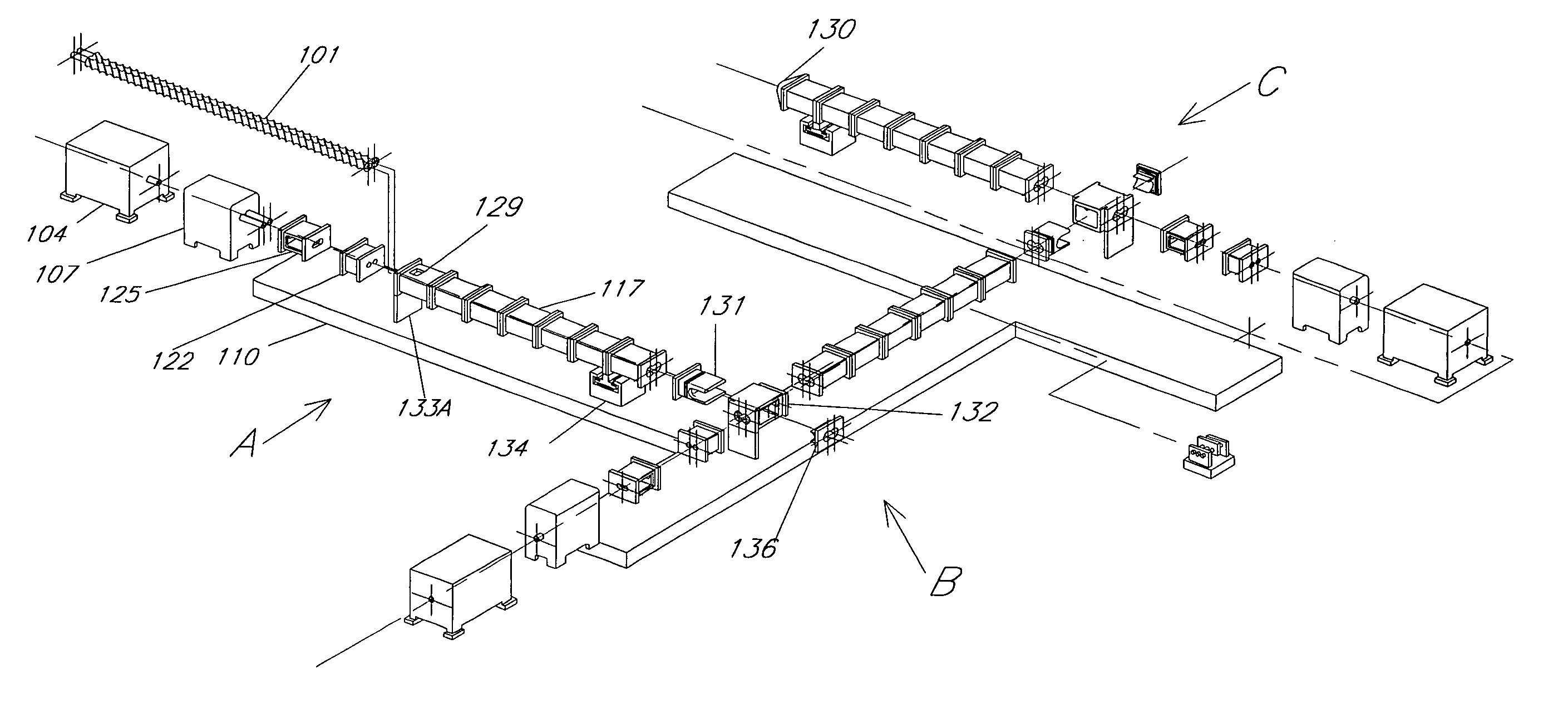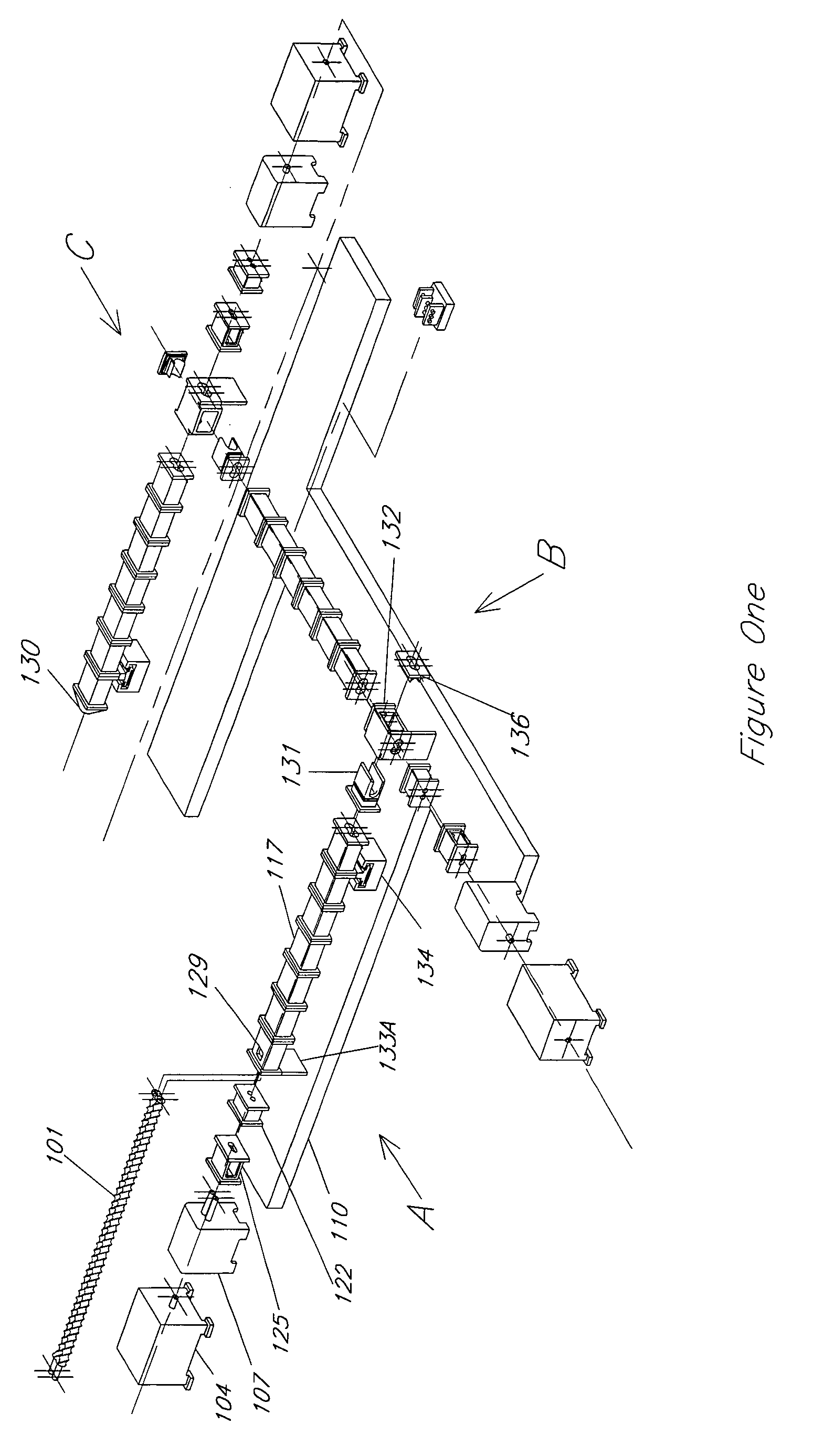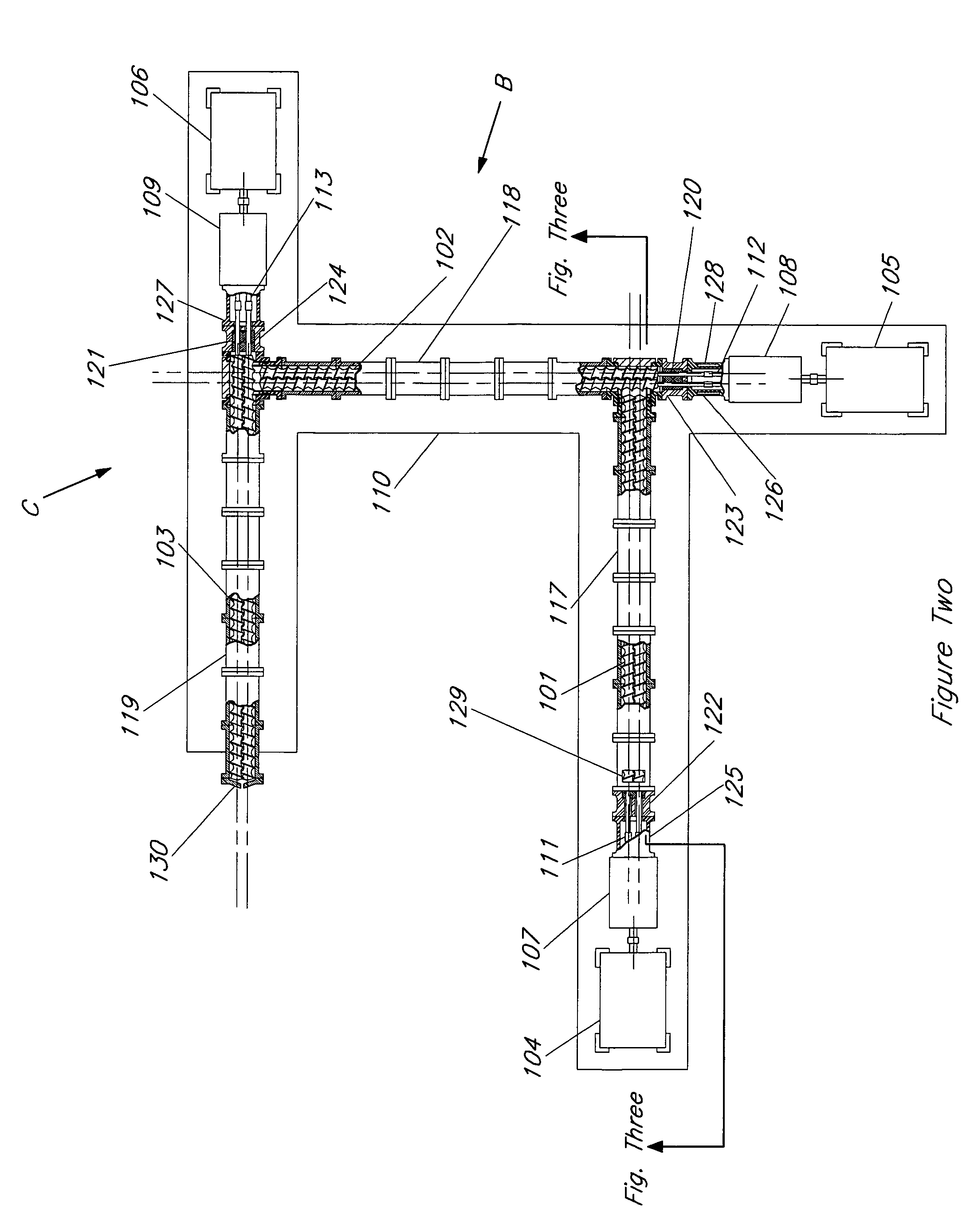Multiple extruder assembly and process for continuous reactive extrusion
a technology of reactive extrusion and extruder, which is applied in the direction of application, dough shaping, sweetmeats, etc., can solve the problems of excessive shear in the polymer, increased instability of the free shaft end, and potential over-torque condition of the driven shaft end
- Summary
- Abstract
- Description
- Claims
- Application Information
AI Technical Summary
Benefits of technology
Problems solved by technology
Method used
Image
Examples
example one
[0060] Reference is made to Figure Ten. An ethylene-propylene copolymer rubber with 49 weight % ethylene, 50 Mooney viscosity measured at 100° C. (ML 1+4) and a moisture content of less than 2.0% is ground to an average particle size of approximately 0.25″diameter and fed into the feed zone “A” of a multiple twin screw extruder assembly with total length to diameter ratio, L / D, of 88 to 1 and screw diameter of 92 mm. The feed rate is 2,000 pounds per hour. Each of the coupled extruders is powered by a 700 horsepower motor. The RPM for L / D 0 to 44 is set at 310. The RPM for L / D 45 to 88 is set at 260. The barrel temperatures in ° C. are set as indicated in Figure Ten. Vacuum is pulled from “B”, “C” and maintained at greater than 18 inches of mercury.
[0061] The discharge of the first extruder is fed into the second extruder that is serially connected to the first extruder with no un-mixed, uncontained or unregulated temperature zone between the two extruders. Rubber entering the seco...
example two
[0064] Reference is made to Figure Eleven. A polymer cement exiting a thin film evaporator is fed at the rate of 2,500 lbs / hr is fed into the feed zone “A” of a multiple twin screw extruder assembly with total length to diameter ratio, L / D, of 88 to 1 and screw diameter of 92 mm. Each of the coupled extruders is powered by a 700 horsepower motor. The RPM for L / D 0 to 44 is set at 150. The RPM for L / D 45 to 88 is set at 270. The barrel temperatures in ° C. are set as indicated in Figure Eleven. Vacuum is pulled from “B”, “C” and maintained at greater than 21 inches of mercury. The polymer cement feedstock has the following characteristics: weight % n-hexane=20%; weight % ethylene / propylene copolymer=80%. The ethylene / propylene copolymer has the following characteristics: weight % ethylene=49%; Mooney viscosity (ML1+4@ 1000 C)=50
[0065] The discharge of the first extruder is fed into the second extruder that is serially connected to the first extruder with no un-mixed, uncontained, or...
example three
[0069] Reference is made to Figure Twelve. The process is the same as Example 1, except the following: The product exiting the second extruder is then continuously fed into a third extruder that is serially connected to the second extruder wherein no unmixed, uncontained or temperature unregulated zone between the second and third extruders exists. The output of the second extruder is monitored by an embedded FTIR probe and control loop at location “P”. The third extruder is a 700 horsepower, 44 / 1 L / D, and 92 mm twin-screw extruder. The extruder RPM and temperatures are as shown in Figure Eleven.
[0070] Solvent neutral oil is pumped into locations “J” and “K” at the rate of 500 lbs / hr each. Molten N-phenyl para-phenylene diamine is injected in location “L” at the rate of approximately 70 lbs / hr as controlled by said FTIR probe at “P”. A vacuum of at least 24″ of mercury is pulled at location “M” to remove the water of reaction. The output of the third extruder is collected as a liqu...
PUM
| Property | Measurement | Unit |
|---|---|---|
| pressure | aaaaa | aaaaa |
| diameter | aaaaa | aaaaa |
| diameter | aaaaa | aaaaa |
Abstract
Description
Claims
Application Information
 Login to View More
Login to View More - R&D
- Intellectual Property
- Life Sciences
- Materials
- Tech Scout
- Unparalleled Data Quality
- Higher Quality Content
- 60% Fewer Hallucinations
Browse by: Latest US Patents, China's latest patents, Technical Efficacy Thesaurus, Application Domain, Technology Topic, Popular Technical Reports.
© 2025 PatSnap. All rights reserved.Legal|Privacy policy|Modern Slavery Act Transparency Statement|Sitemap|About US| Contact US: help@patsnap.com



